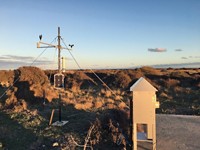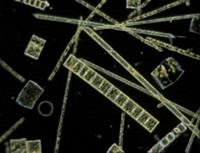Advertisement
Grab your lab coat. Let's get started
Welcome!
Welcome!
Create an account below to get 6 C&EN articles per month, receive newsletters and more - all free.
It seems this is your first time logging in online. Please enter the following information to continue.
As an ACS member you automatically get access to this site. All we need is few more details to create your reading experience.
Not you? Sign in with a different account.
Not you? Sign in with a different account.
ERROR 1
ERROR 1
ERROR 2
ERROR 2
ERROR 2
ERROR 2
ERROR 2
Password and Confirm password must match.
If you have an ACS member number, please enter it here so we can link this account to your membership. (optional)
ERROR 2
ACS values your privacy. By submitting your information, you are gaining access to C&EN and subscribing to our weekly newsletter. We use the information you provide to make your reading experience better, and we will never sell your data to third party members.
Environment
Carbon flux in the ocean's twilight zone
April 30, 2007
| A version of this story appeared in
Volume 85, Issue 18
The twilight zone in the ocean falls between the sunlit photosynthetic layer at the surface and depths below 1,000 meters. New measurements by Ken O. Buesseler of Woods Hole Oceanographic Institute and colleagues show that the variability in the amount of carbon passing through this zone could dramatically change calculations for carbon storage in the deep ocean (Science 2007, 316, 567). What happens to carbon detritus in the little-studied twilight zone affects how much carbon is transferred from the atmosphere to the depths. The researchers developed neutrally buoyant sediment traps to collect sinking particles. Their measurements at 150 meters and 500 meters deep at two sites in the Pacific Ocean show that plankton and other resident biota have different appetites for the carbon materials. Near Hawaii, only 20% of the sinking carbon made it down to 500 meters, but in the northwestern Pacific, 50% of the carbon matter did. The researchers estimate that this variance could change previous global carbon sequestration estimates by as much as 3 petagrams (1015 g) per year.




Join the conversation
Contact the reporter
Submit a Letter to the Editor for publication
Engage with us on Twitter